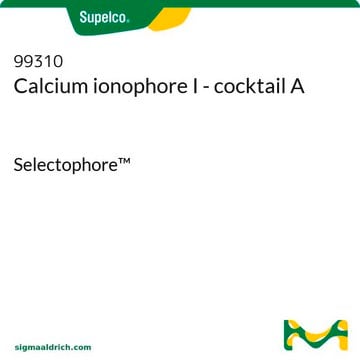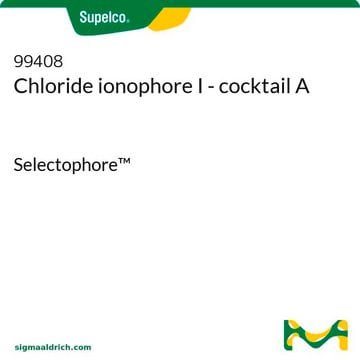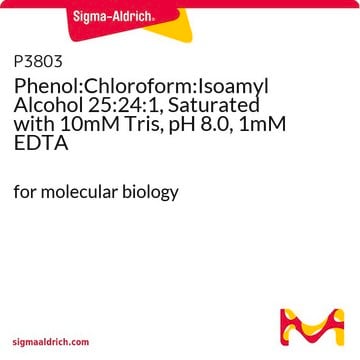99311
Potassium ionophore I - cocktail A
Selectophore™
Sign Into View Organizational & Contract Pricing
All Photos(1)
About This Item
UNSPSC Code:
26111700
NACRES:
NB.61
Recommended Products
product line
Selectophore™
Quality Level
form
liquid
composition
Dibutyl sebacate, 68.0 wt. % (84838)
1,2-Dimethyl-3-nitrobenzene, 25.0 wt. % (40870)
Potassium ionophore I, 5.0 wt. % (60403)
Potassium tetrakis(4-chlorophenyl)borate, 2.0 wt. % (60591)
Related Categories
General description
Visit our Sensor Applications portal to learn more.
Application
Selected application examples
Packaging
Clear borosilicate glass, high hydrolytic resistance (Type I)
Other Notes
Ready-to-use ion selective liquid for the preparation of microelectrodes in micropipettes
Legal Information
Selectophore is a trademark of Merck KGaA, Darmstadt, Germany
Signal Word
Danger
Hazard Statements
Precautionary Statements
Hazard Classifications
Acute Tox. 2 Dermal - Acute Tox. 3 Oral - Aquatic Chronic 2
Storage Class Code
6.1A - Combustible acute toxic Cat. 1 and 2 / very toxic hazardous materials
WGK
WGK 3
Flash Point(F)
Not applicable
Flash Point(C)
Not applicable
Personal Protective Equipment
dust mask type N95 (US), Eyeshields, Gloves
Choose from one of the most recent versions:
Already Own This Product?
Find documentation for the products that you have recently purchased in the Document Library.
D. Ammann et al.
Ion-Selective Microelectrodes and their Use in Excitable Tissues, 13-13 (1981)
Mengliang Niu et al.
Journal of experimental botany, 69(20), 4945-4960 (2018-07-12)
Tissue tolerance to salinity stress is a complex physiological trait composed of multiple 'sub-traits' such as Na+ compartmentalization, K+ retention, and osmotic tolerance. Previous studies have shown that some Cucurbita species employ tissue tolerance to combat salinity and we aimed
E.Sykova et al.,eds.
Ion-Selective Microelectrodes and their Use in Excitable Tissues, Plenum Press null
D. Ammann et al.
Ion-Selective Microelectrodes and their Use in Excitable Tissues, 13 -13 (1981)
Giselle Cheung et al.
The Journal of physiology, 587(Pt 4), 753-768 (2008-12-03)
Microglial cells (brain macrophages) invade the brain during embryonic and early postnatal development, migrate preferentially along fibre tracts to their final position and transform from an amoeboid to a ramified morphology. Signals by which the invading microglia communicate with other
Our team of scientists has experience in all areas of research including Life Science, Material Science, Chemical Synthesis, Chromatography, Analytical and many others.
Contact Technical Service










